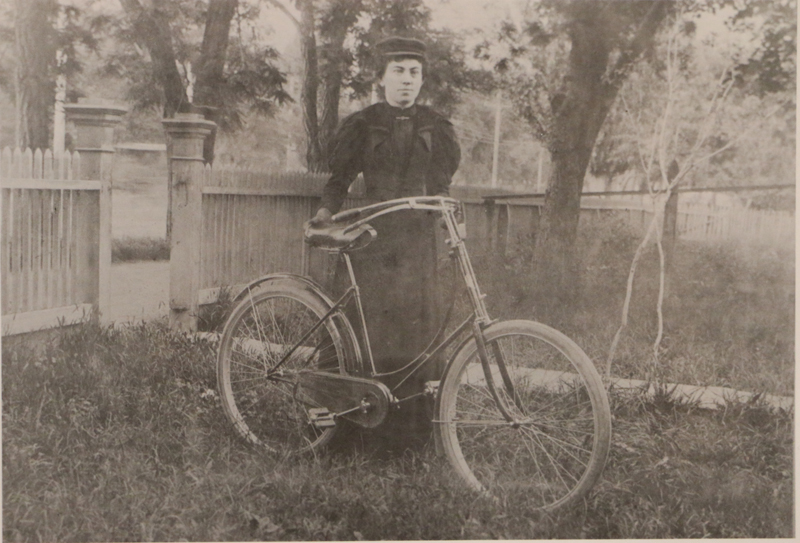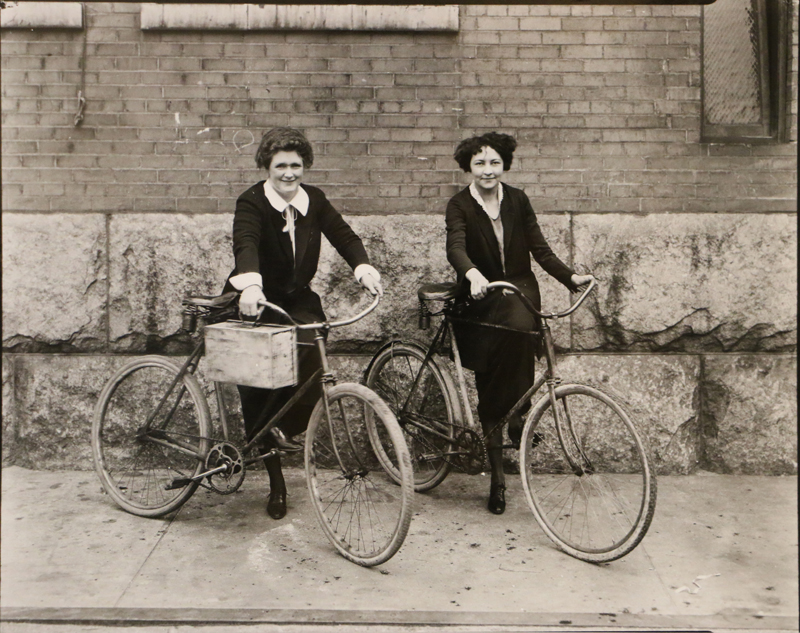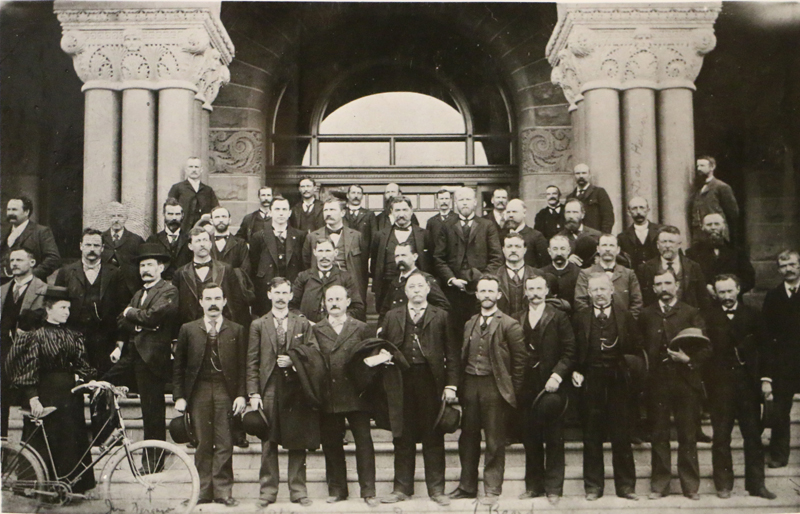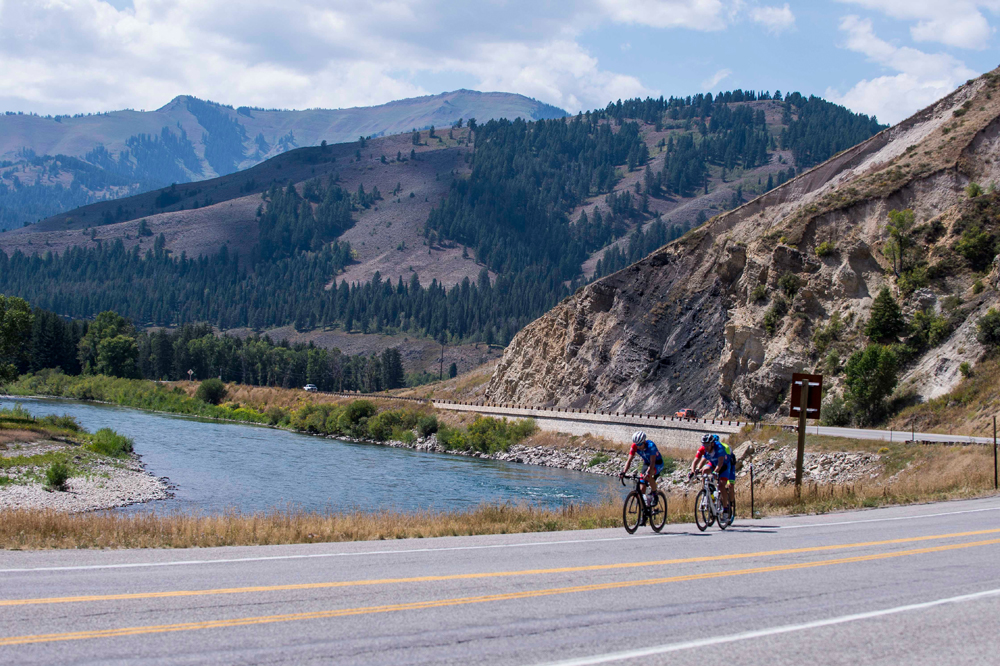
By Tara McKee
In Commemoration of Women’s History Month (March) –
The first “modern” Olympics in 1896 held a number of cycling competitions, a road race and five track races. But in those first Olympics, cycling races were for men only and would remain that way for nearly a century until the Los Angles Olympics included the first women’s road race in 1984. Did you know that it wasn’t until the London Olympics in 2012 that men and women competed in the same number of events in all cycling disciplines? With women’s cycling making such recent advances, it would be a mistake to think that women had just discovered the bicycle in these past few decades. In fact, even before the 1896 Olympics, American and European women were avidly embracing the bicycle which provided an independent means of transportation, a freeing revolution in fashion, and a chance to explore athleticism as female cyclists began racing and breaking records with feats of endurance and cross-country adventure races.
It wasn’t love at first sight as the “Ordinary” bicycle with its large front wheel and the positioned the rider in a high seated position straddling the front wheel. Such a position made riding a bicycle difficult for Victorian women. Women’s clothing at the time included corsets, hoops, an average of 14 pounds of thick undergarments, and long, floor-length skirts. In the 1880s, the brave few who rode and race such bicycles often took to wearing a short skirt with Turkish inspired trousers called “bloomers.” As Colorado native, Dora Rinehart said during her testimony to the Colorado State Medical Society in 1894, “Just to give you an idea of the benefits of a divided skirt, it is almost impossible for a lady to ride any distance…with the ordinary skirt. You get too much of the dress on the one side of the wheel, and you do not get enough of the dress on the other side.”
Such a fashion revolution didn’t get far. Although the bloomers were practical and much more comfortable than corsets and hooped skirts, there was a fierce societal backlash, bloomers were seen as scandalous by some and even more considered them unattractive. Instead, women began to adopt “rational dress;” slightly shorter skirts with a limit of 7 lbs of undergarments. The bicycle, too, went under a change. It was the invention and mass production of the “Safety Bicycle” with wheels of equal size, coupled with the production of efficient pneumatic tires started the bicycle craze of the 1890s. The drop-frame, with its center bar swooped down low, made it possible to ride the bike with a skirt. The bicycle was allowing women to ride into a whole new world.

As the American population had become increasingly urban during the Victorian era, women lost the freedom of physical mobility, as women depended on male family members for transportation. A bicycle would give late Victorian women the freedom to go off on her own, as far and as fast she could pedal, unaccompanied by a chaperone. The bicycle would help change the self perception of women in the 1890s as few things had done before. More women joined the suffragette (women’s rights) cause as they began to see themselves as equal to the men and deserving of equal rights as well. The women’s suffrage movement and the bicycle became so linked that Harvard students burned an effigy of a woman on a bicycle to protest women who were marching for the right to vote. Susan B. Anthony was cheerfully optimistic about changes for women’s rights, telling reporter Nelly Bly that bicycling “has done more to emancipate women than anything else in the world,” adding, “It gives women a feeling of freedom and self-reliance. I stand and rejoice every time I see a woman ride by on a wheel…the picture of free, untrammeled womanhood.”
Organized women’s sports were just beginning in the 1890s and women who participated in “unladylike” sports were often regarded with suspicion. Indeed, the League of American Wheelmen (the predecessor of today’s League of American Bicyclists) refused to sanction any racing event that included females. As women were shut out of many races and events, they began to hold separate competitions. One of the most popular women’s cycling competitions was the six day race, a true test of endurance. The cyclists would ride three or four hours a day for the six days, riding as many miles as possible over the 18 or 24 hour period of racing to win. Sixteen year old Monica Harwood rode 429 miles to win London’s first women’s “six” in 1896, while the American champion, Frankie Nelson, so dominated the events, she was dubbed “Queen of the Sixes.”
Endurance events by female cyclists caught the attention of the public and the press. Dora Rinehart of Colorado became famous as a century rider, earning the title, “America’s Greatest Cyclienne.” In 1896 alone, she rode 17,196 miles, often riding a century a day. In June of 1894, a young Jewish mother of three small children took on the ultimate challenge to become the first woman to ride around the world. A $10,000 prize awaited Annie Kopchovsky if she succeeded and even though she had never ridden a bicycle before, after two lessons, she bravely started the journey. The stipulations required her to start the ride penniless, signing up sponsors as she went and return within 15 months with at least $5000 of earnings in her pocket. Annie changed her name in honor of her first sponsor to ‘Annie Londonderry’ and set off on what the New York World described as “the most extraordinary journey ever undertaken by a woman.” The round-the-world trip was successful and she returned to New York just under 15 months later. The New York World promptly hired her to write feature stories and her first was about her cycling adventures. She wrote, “I am a journalist and a “new woman,” if that term means that I believe I can do anything a man can do.”

By the late 1890s Wyoming Utah, Colorado, and Idaho had begun the shift by giving women the right to vote and as the 20th century dawned, the movement to extend the voting rights to women across the US had been launched. Women, who had been in the battle a long time, were beginning to see the tide was turning. The connection between women riding the bicycle while gaining their rights would be underscored even more by an essay titled, How I Learned to Ride the Bicycle by Frances Willard. One of the leaders in the women’s movement, Frances Willard, had taken on the challenge at age 53 to learn to ride a bike. As she diligently practiced about 15 minutes a day for three months to master the bike, she became convinced that if other women also learned to ride a bike it would help them to seek a “wider world.” She wrote, “She who succeeds in gaining the mastery of a bicycle, will gain the mastery of life.” Wise words, indeed.











